Revolution on Two Wheels – The Birth of a New Sawmilling Technology
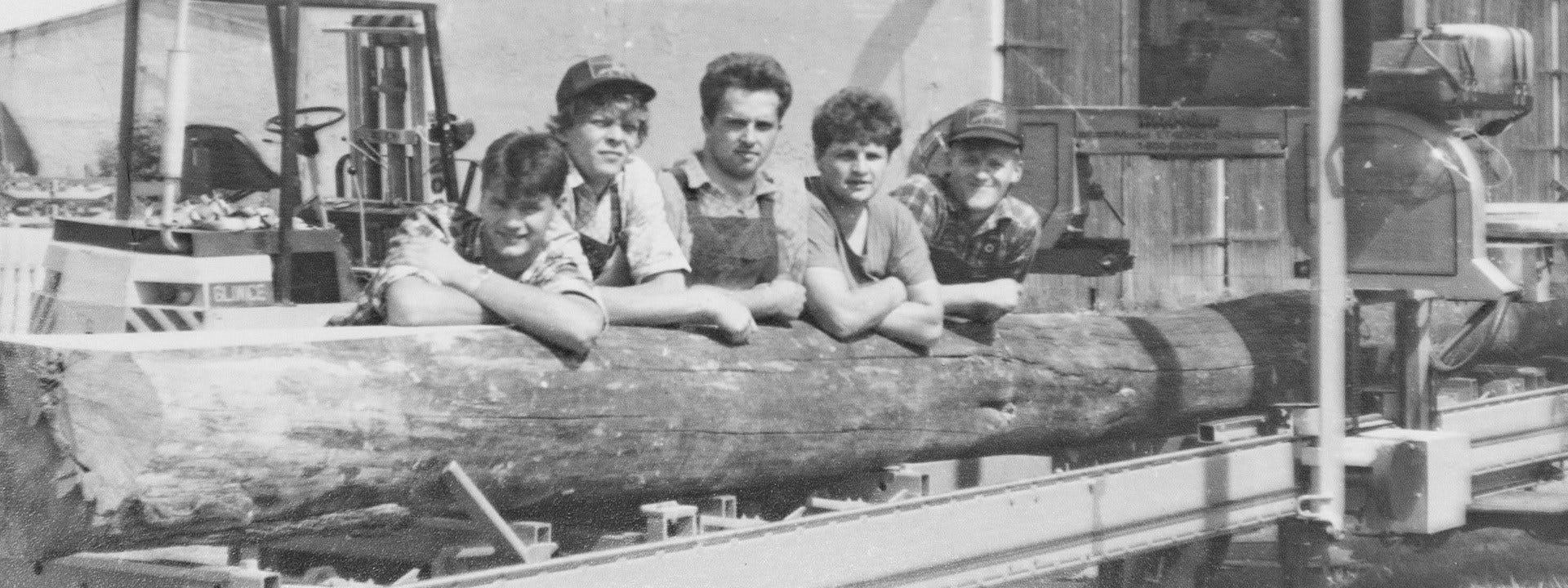
This series of articles is devoted to the evolution of the LT40 portable sawmill, based on Wood-Mizer's archives and interviews with specialists from Research & Development, Customer Service, Sales and Marketing. And, of course, the feedback of customers who work with the LT40 sawmill worldwide.
The first mobile band sawmill began its history in 1982, in the USA, when two talented engineers, Don Laskowski and Dan Tekulve, designed a new machine that could cut a log to timber. The operator could be anybody, as the sawmill operation was easy, and the place of work could be anywhere, as the sawmill was light and portable. The basic engineering presumptions made this machine a modern and innovative tool, which started a revolution in the sawmilling industry. In the same year, the company Wood-Mizer was founded. The sawmill model received its name with the symbol "LT" - the initial letters of the engineers' last names "Laskowski & Tekulve." The innovative sawmilling technology quickly earned a reputation among customers across the USA and eventually reached Europe in the late 80s.
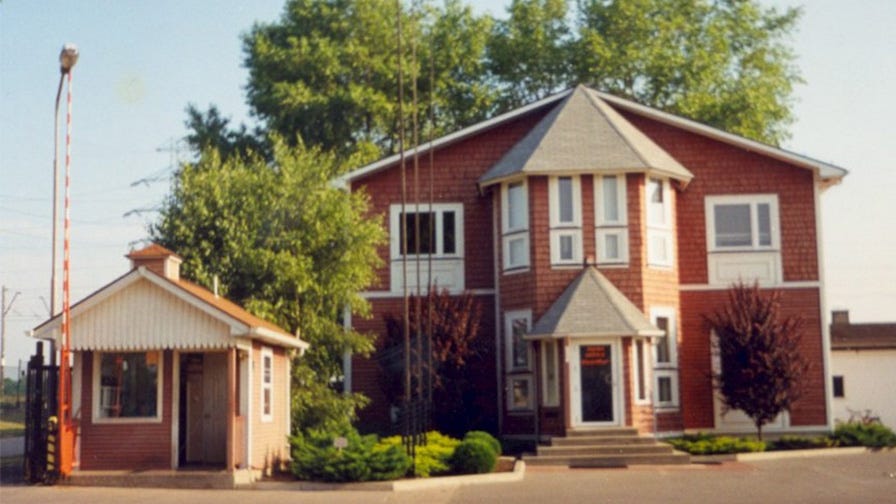

Wood-Mizer Europe main office in Koło, Poland in the early 90s
Europe Welcomes the First LT40 Sawmill
The history of Wood-Mizer Europe dates back to 1989, when the Polish entrepreneur Jerzy Hajduczyk, who lived in the USA, recognized the potential of the Wood-Mizer sawmill in Poland. Having realized how much the sawmill could contribute to the Polish building industry at the time, he decided to start distributing sawmills in Europe while promoting the construction of wooden-frame family houses throughout Poland. In the summer of 1990, the newly opened Wood-Mizer office in Koło, Poland, received their first LT40 sawmills.
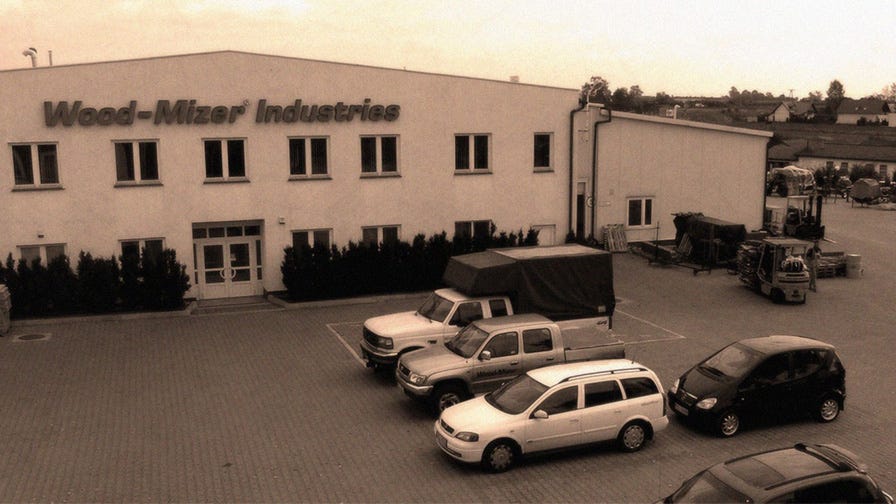

Wood-Mizer Industries assembly facility in Koło, Poland
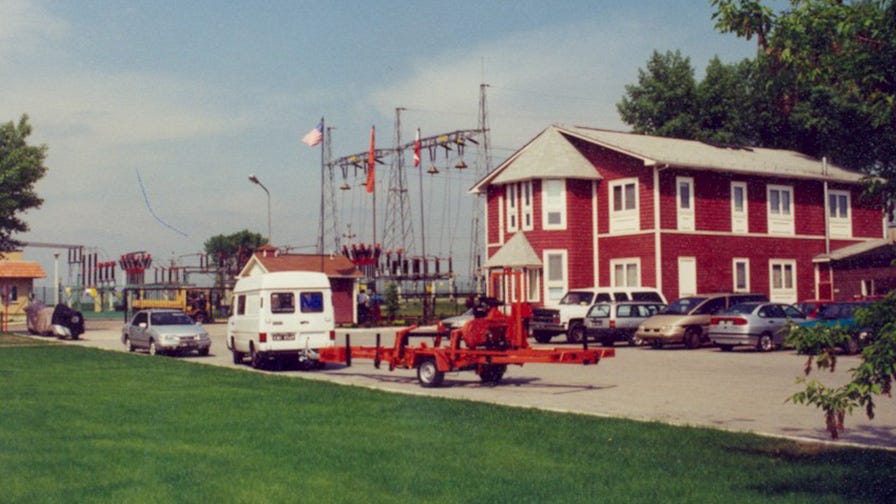

Wood-Mizer LT40 ready for towing
"I remember the first two LT40 sawmills which came to us from America were the '87 models produced in 1988. In the following months, we were receiving the LT30 and LT40 models, and their difference was in the bedframe length. The LT30 had a 5,1 m long frame, and the LT40 a 6,4 m long frame, whereas the sawing head remained identical," recalls Robert Fret, a long-time Wood-Mizer Customer Service specialist. "The first sawmills which arrived at Koło we used for public demonstrations and contract sawmilling." This sawmill service was popular among the people, and well-trained Wood-Mizer technicians could also present the new technology in nearby towns and villages.
The early 1990s in Poland marked a time of complex economic and political transformations, as well as a time of stagnation in the sawmilling industry which needed urgent reforms. Many sawmilling companies used old and stationary frame sawmills with thick blades that processed logs with a limited diameter. In addition, these old sawmills consumed a lot of energy and produced a lot of waste. Sawmilling of logs to boards and cants could take place only at stationary sawmills, which meant an additional cost of transportation for customers. "A log milled on the old frame-sawmills had to be entirely milled before the operator could see the quality of the sawn material. Generally speaking, you load a log into the sawmill and hope that the timber the machine gives you back is more or less good. The rest is nothing more than a waste," points out Robert Fret.
The mobile LT40 sawmill offered a new way of sawmilling. "When we were driving with the first sawmills around the nearby villages to cut logs for our customers, entire neighborhoods turned up to look at the machine. People were asking us what kind of machine it was and what we would do with it. They couldn't believe that the sawmill bed would hold the weight of a large poplar. To their surprise, the LT40 was cutting such logs into boards and beams without much effort. Our customers could get significantly more timber from a single log than expected. For the industry, it was not just a breakthrough. It was a revolution!" remembers Dariusz Kujawa, Customer Service Department Manager and one of Wood-Mizer's most experienced employees with a career starting with the company in the early 1990s.


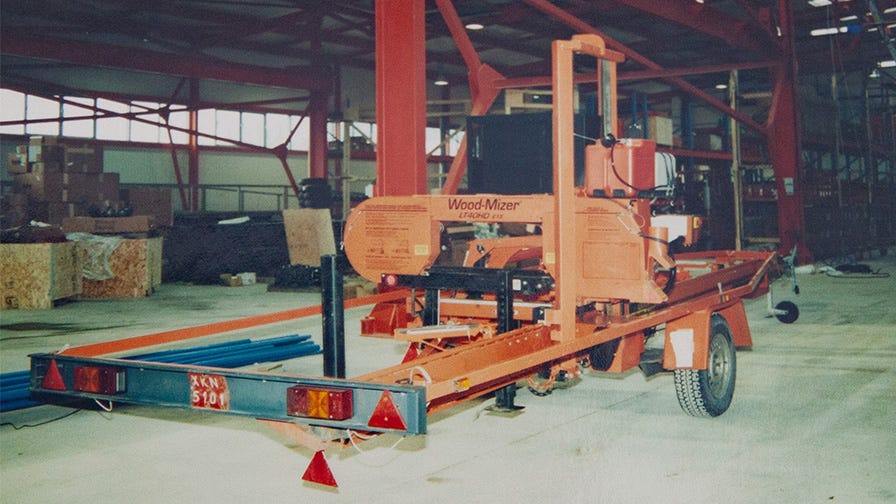

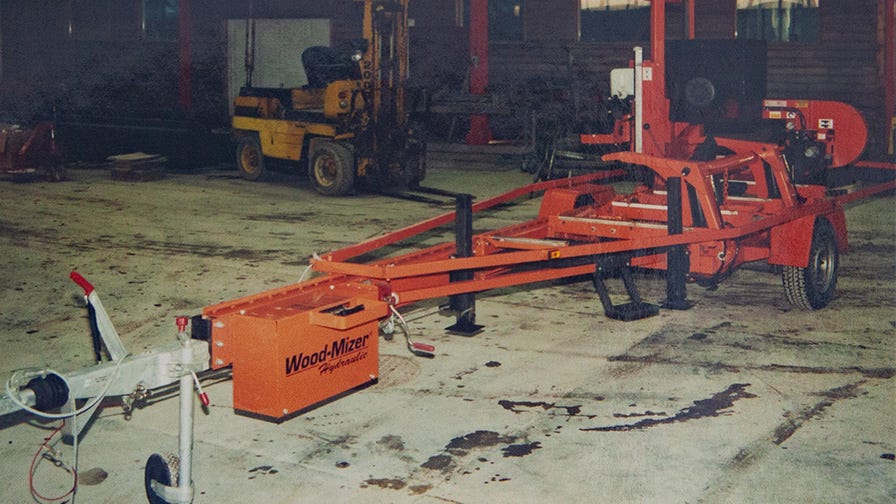

Another revolution was the thin, robust, and very efficient bandsaw blades used on the sawmill. The thin-kerf sawmill blade technology allowed the sawmiller to produce more valuable timber with minimum waste and less power needed to operate the machine. "With this sawmill blade, we could cut an oak log up to 90 cm wide. People didn't believe it would be possible. At different shows and exhibitions, we always had plenty of spectators who couldn't wait to give us a hand carrying the timber. It was fantastic to be in the spotlight!" recalls Robert Fret.
An Innovative Construction
The engineers of the first Wood-Mizer sawmill were familiar with the situation in the wood industry at the time. They made a few engineering solutions that they thought a modern sawmill should feature. The sawmill was designed to be lightweight, easy to operate, and, most importantly, portable. It allowed the user to transport it to any place he needed to produce timber safely and conveniently.
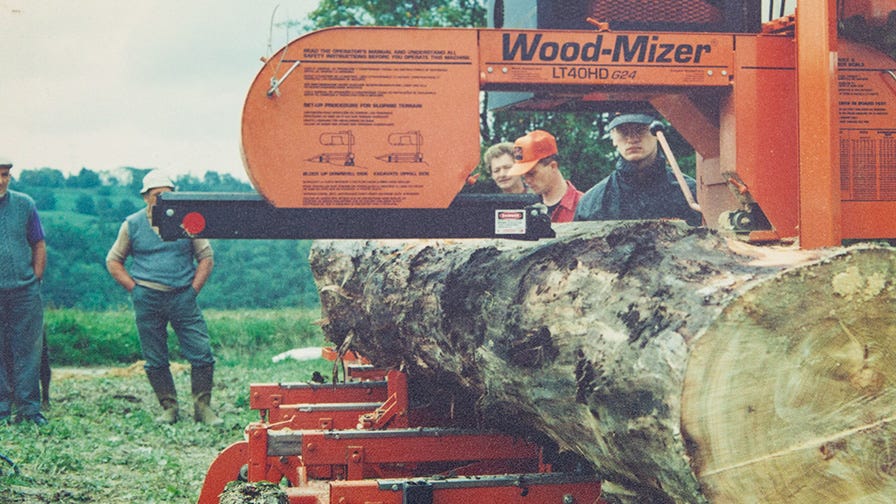

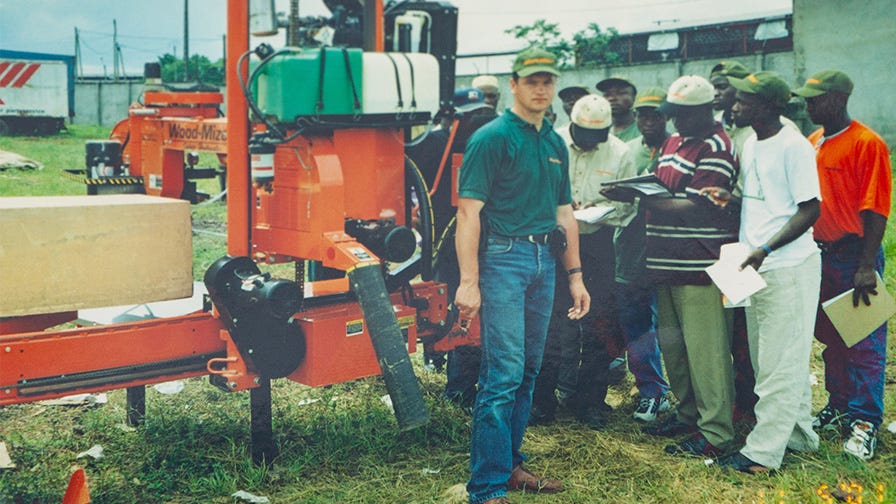

"Innovative was also the lightweight design and the possibility to tow the sawmill. One of the first machines that came to Poland was the Wood-Mizer LT40 hydraulic 24 horsepower gas engine sawmill, with a weight around 1200 kg. It had a simple hydraulic bed functions, such as a central clamp, log turner, loading arms, and a leveling mechanism. I will never forget how we towed the sawmill through town with a small passenger car, and today it makes me smile when I think how disproportional it was," admits Dariusz Kujawa.
The LT40 sawmill was not only a revolution for the sawmilling industry, but it was also a chance for ordinary people to start their businesses. From the business point of view, investing in a mobile machine for producing timber at the customer site was an intelligent decision. The LT40 could supply a customer with much more wood than expected, and the waste produced was minimal. "The LT40 created an opportunity for their owners to earn a good living while proving that it's a fully sufficient machine to run a prosperous company," said Robert Fret.
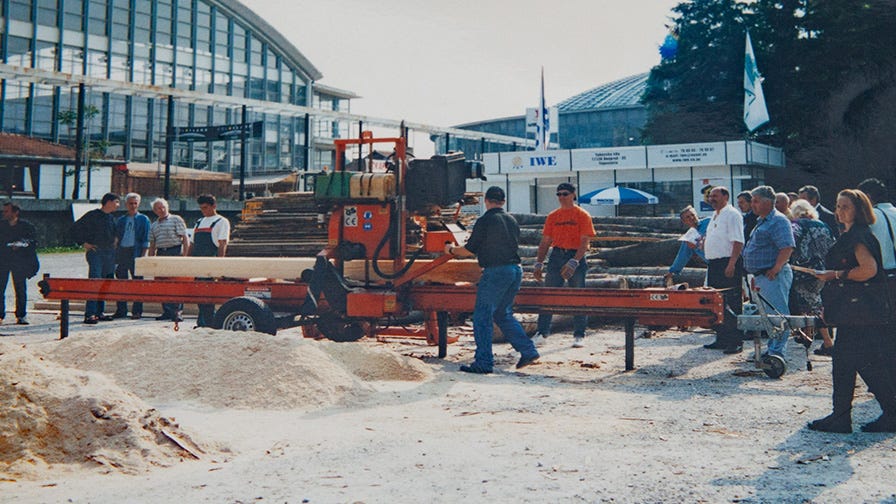

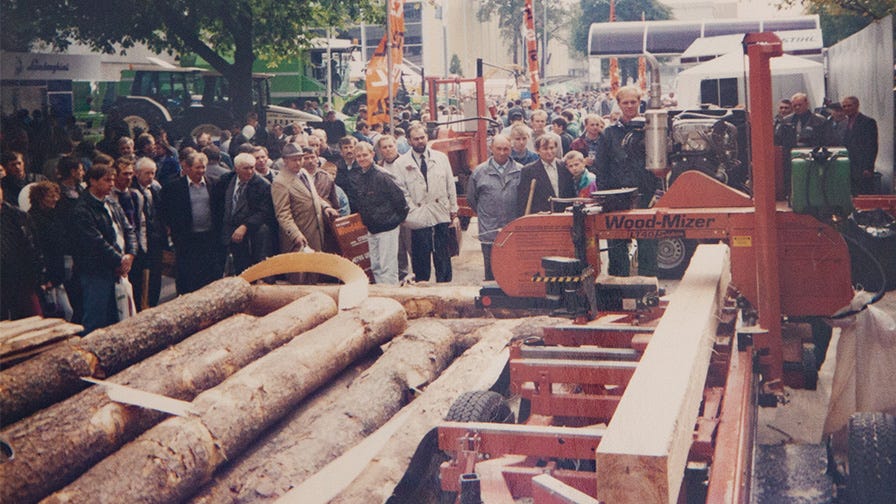

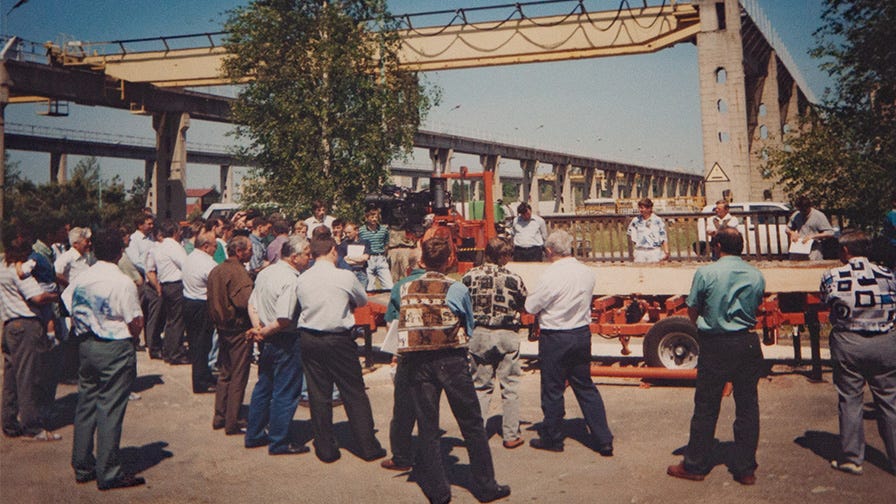

Leader in Its Class
Since the beginning, the sawmill was well designed and had features that set the new direction for other sawmills to follow. The LT40 became an engineering standard for all sawmills from the LT series, which are well-known by a cantilever saw head suspended on a single mast over a bed.
"If you buy an LT40, you're getting a ‘legend’. For a business with the production at a steady level, without the need to increase the volume, this sawmill is practically 'everlasting,'" explains Dariusz Kujawa.
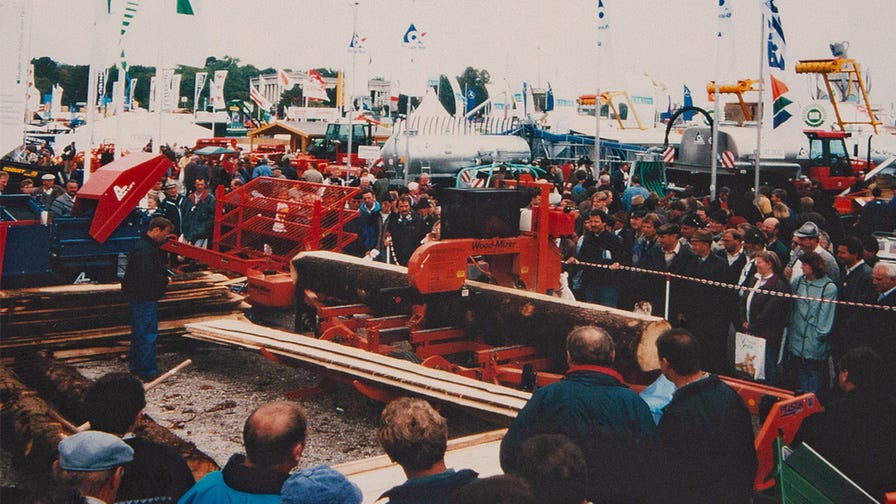



Several upgrades and modifications on the LT40 sawmill have seen improvements in 40 years on the sawmill market. Safety regulations required them, and they increased comfort of use, boosted the efficiency and precision of cutting, or, in several cases, users suggested some practical improvements.
Notable upgrades in the LT40 sawmill design include:
• first modifications introduced in the USA in 1987
• unification of the control switches in one box (1991)
• introduction of an overrun braking mechanism (1992)
• major sawmill frame upgrade (1996)
• introduction of "Simple Set" - an automatic board thickness control (1997)
• introduction of AC power and conversion to the metric system (1998)
• introduction of KUBOTA gasoline engines (2000)
• introduction of WIDE version of the saw head (2020)
Wood-Mizer left many critical designs unchanged, as the engineers say, "if something works properly, there is no need to change it.”
Read more from the series:
- Revolution on Two Wheels – The Birth of a New Sawmilling Technology
- The LT40 Sawmill History: Sawhead and Control Panel Upgrades
- The LT40 Sawmill History: Blades and Blade Guide System Upgrades
- The LT40 Sawmill History: Engine Upgrades
- The LT40 Sawmill History: Bed and Hydraulics Upgrades
- Wood-Mizer LT40: The Best Sawmill for Your Business
***

